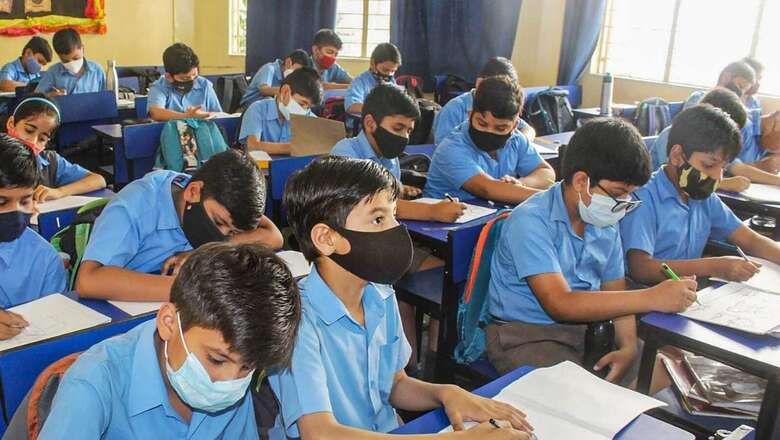
views
In the grand tapestry of India’s educational landscape, a momentous achievement shines through the challenges that have tested the resilience of its schooling system. We have achieved near universal enrollment of children at the primary level, with half of all school-going children in primary grades. With an unprecedented surge, India has successfully enrolled more children in secondary schools than ever before, showcasing a remarkable climb from 97.2% in 2018 to an impressive 98.4% in 2022.
Even in the face of pandemic-induced school closures, the Annual Status of Education Report (ASER) 2022 unveils this fact, signaling the highest enrollment rates for the crucial 6-14 age group. However, schooling hasn’t necessarily translated to learning. Amid this apparent success, a daunting reality lingers — India grapples with a profound learning crisis that casts a shadow over the very progress celebrated in enrollment numbers. This paradox sets the stage for a critical exploration into the nuances of India’s educational landscape, where enrollment milestones collide with the pressing need for effective learning outcomes.
India’s Foundational Literacy and Numeracy Status
India has undoubtedly traversed a considerable distance in formulating a system geared towards achieving FLN outcomes. Key initiatives such as the Integrated Child Development Scheme, the Right to Education Act (2002, 2009), the Samagra Shiksha Abhiyan, and the National Education Policy (NEP) 2020 have played pivotal roles in highlighting the significance of foundational skills. These programs not only underscore the importance of basic literacy and numeracy but also contribute to fortifying the mechanisms necessary for their attainment. However, the historical underperformance in Foundational Literacy and Numeracy levels has cast a long shadow over the educational landscape, effectively handicapping the holistic development of young minds.
A discerning World Bank study, revealing that a staggering 56.1% of children under the age of 10 struggle to read simple text, serves as an alarming testament to the depth of this predicament. Furthermore, ASER studies add granularity to this narrative, uncovering substantial weaknesses not only in reading but also in fundamental arithmetic functions like subtraction. Only 24.3% of grade 5 students in the country can do simple subtraction. This dichotomy between heightened enrollment rates and the grim reality of deficient FLN skills encapsulates a critical juncture in India’s educational journey, demanding urgent attention and innovative solutions to bridge the widening gap between access to education and the quality of learning outcomes.
How did we get here?
Built on the recognition that the prevailing education system in India often prioritises exams over genuine learning, it is imperative to shift the focus towards fostering essential skills. The prevailing emphasis on rote learning creates a restrictive environment, hindering teachers from innovating their pedagogical methods. The detrimental consequence is that examinations become the ultimate goal for both faculty and students, overshadowing the true purpose of education.
Solving for FLN in India
The imperative shift toward competency-based assessments is crucial for effective classroom planning and overall educational enhancement. By focusing on students’ actual competencies rather than rigid class-based benchmarks, educators can tailor their teaching strategies to address specific learning needs. Furthermore, implementing large-scale school readiness assessments becomes pivotal in identifying and addressing potential gaps early on in a student’s academic journey.
To overcome governance bottlenecks, initiatives that promote accountability across various tiers of the public education system are essential. Accountability measures need to be established at multiple cadres, ensuring that responsibilities are clearly defined and progress is transparently tracked. This approach fosters a culture of responsibility, encouraging all stakeholders to actively contribute to the improvement of the education system.
Mapping students’ learning history to their actual proficiency levels, regardless of their designated class, is a progressive step in acknowledging the diversity in learning paces. This practice enables timely and targeted interventions, ensuring that students receive remedial instruction to bridge any gaps in their understanding. This approach prevents the mechanical promotion of students to the next class without the necessary foundational skills, fostering a more equitable and supportive educational environment. By prioritising competency-based assessments and instituting accountability measures, the education system can better cater to the unique needs of each learner, promoting a more inclusive and effective learning experience.
Collaborative partnerships between government bodies, educational institutions, and non-governmental organisations can play a pivotal role in addressing these challenges. By pooling resources, expertise, and innovative solutions, stakeholders can work together to bridge the gaps in the education system. Furthermore, leveraging technology for teacher training and providing accessible, multilingual educational resources can help alleviate some of the implementation hurdles.
In essence, while the road ahead is undeniably challenging, a persistent and concerted effort to prioritise education reform can gradually overcome the obstacles posed by size, diversity, multilingualism, and resource shortages. Continuous focus, adaptability, and collaboration are key elements in navigating the complexities and ensuring a more effective and inclusive education system for all learners.















Comments
0 comment